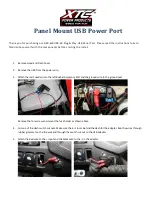
3-28
Safety system
Seat belt use and children
Infant and small children
Most countries have child restraint
laws which require children to travel
in approved child restraint devices,
including booster seats. The age at
which seat belts can be used instead
of child restraints differs among coun-
tries, so you should be aware of the
specific requirements in your country,
and where you are travelling. Infant
and child restraints must be properly
placed and installed in a rear seat.
For more details, refer to the “Child
Restraint Systems” in this chapter.
WARNING
ALWAYS properly restrain infants
and small children in a child restraint
appropriate for the child’s height
and weight.
To reduce the risk of serious injury
or death to a child and other passen-
gers, NEVER hold a child in your lap
or arms when the vehicle is moving.
The violent forces created during an
accident will tear the child from your
arms and throw the child against the
interior of the vehicle.
Small children are best protected
from injury in an accident when prop-
erly restrained in the rear seat by a
child restraint system that meets the
requirements of the Safety Standards
of your country. Before buying any
child restraint system, make sure that
it has a label certifying that it meets
Safety Standard of your country. The
restraint must be appropriate for your
child’s height and weight. Check the
label on the child restraint for this
information. Refer to “Child Restraint
Systems” in this chapter.
Larger children
Children under age 13 and who are
too large for a booster seat must
always occupy the rear seat and use
the available lap/shoulder belts. A
seat belt should lie across the upper
thighs and be snug across the shoul-
der and chest to restrain the child
safely. Check belt fit periodically. A
child’s squirming could put the belt
out of position. Children are afforded
the most safety in the event of an
accident when they are restrained by
a proper restraint system and/or seat
belts in the rear seat.
If a larger child over age 13 must be
seated in the front seat, the child
must be securely restrained by the
available lap/shoulder belt and the
seat should be placed in the rearmost
position.
If the shoulder belt portion slightly
touches the child’s neck or face, try
placing the child closer to the center
of the vehicle. If the shoulder belt still
touches their face or neck, they need
to be returned to an appropriate
booster seat in the rear seat.
WARNING
• Always make sure larger chil-
dren’s seat belts are worn and
properly adjusted.
• NEVER allow the shoulder belt
to contact the child’s neck or
face.
• Do not allow more than one
child to use a single seat belt.
















































